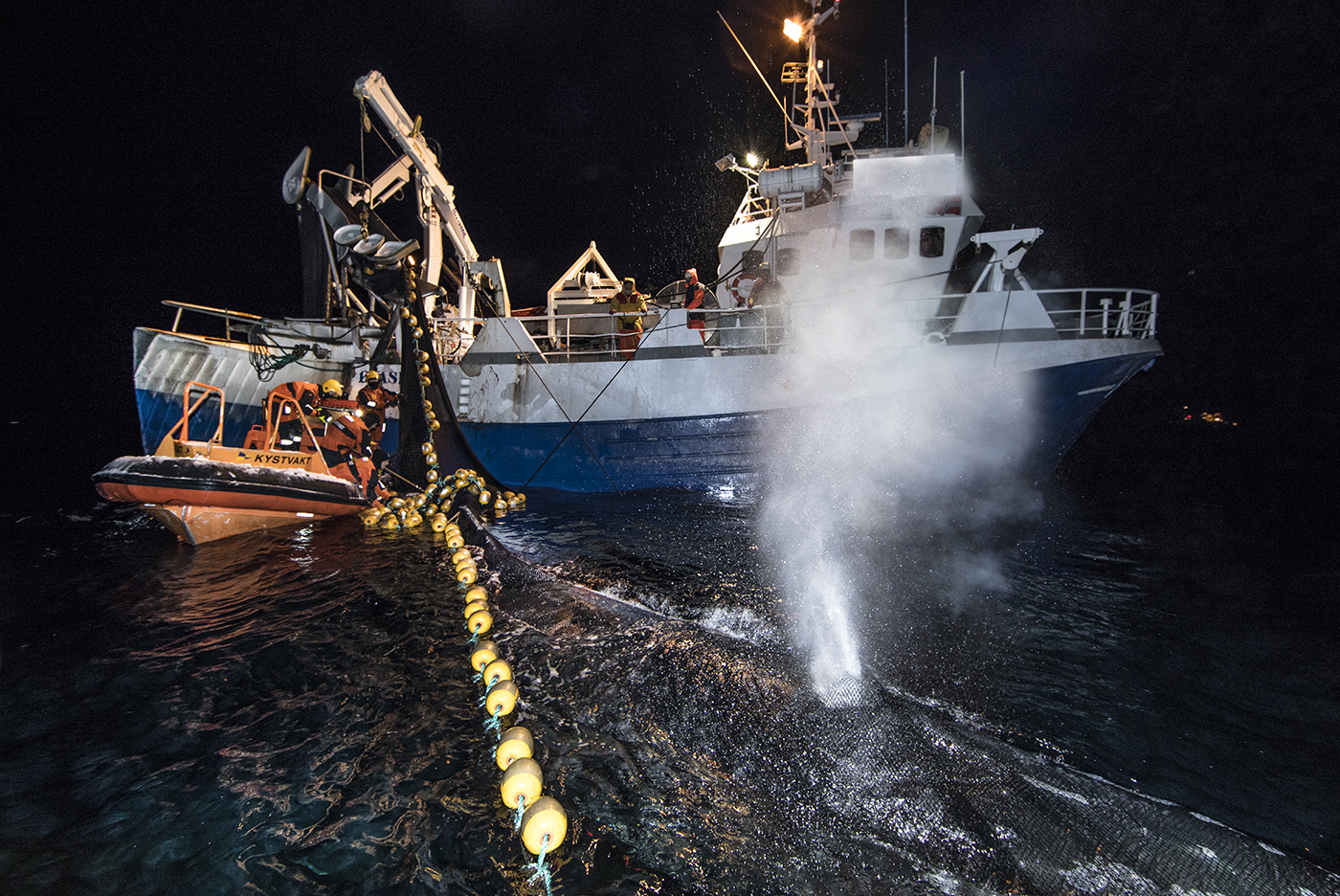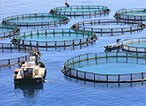Targeted Acoustic Startle Technology keeps killer whales away from fishing boats
Research conducted in Norway by the Institute of Marine Research and the University of St Andrews on fishing grounds in Tromsø during November of 2021 and November 2022 shows the effectiveness of TAST in deterring Killer Whales.
The findings determined that the GenusWave signal resulted in:
• An 85% reduction in killer whale sightings on the fishing grounds
• A deterrent range that was predominately 0 – 50 meters from the sound source
• No harm to killer whales from the sound
• No lasting exclusion from the area once the sound was turned off

An average of 18 large whales are entangled in nets each year – a problem for both animals and fishermen.
On average, 7 humpback whales and 11 killer whales are caught in Norwegian herring nuts each year. Some whales may die, but many survive. But getting the whale out alive requires a lot of effort.
In many cases, the fishermen lose their catch and have their fishing gear destroyed, which is costly and time-consuming. Even if the whale survives, it is uncertain what injuries it may have sustained, and sometimes the whale probably dies. This is therefore a problem for both the whales and the fishermen, says Tenningen. But keeping a whale away from the note is easier said than done.
It is not so easy to keep a hungry humpback whale of 30 tons or a smart killer whale of over five tons away from the bill on board a fishing boat.
We’ve found the sounds the killer whales don’t like
Since 2021, the Institute of Marine Research, UiT Norway’s Arctic University, and the University of St. Andrews have mapped and tested methods to reduce collisions between fisheries and whales.
New experiments show that sound may be the answer.
The idea is that the whales will steer clear of boats and nets if the boats emit a sound the whales don’t like, says the HI researcher. The marine researchers used a method developed by the Scottish researchers and Genuswave AS to find sounds that are perceived as unpleasant for killer whales and humpback whales, while at the same time, the sounds cannot damage the hearing of the animals.
More about the method: Satellite marks the animals to measure their response to the startling sounds
Noise led to 85 percent fewer killer whales on fishing grounds in Troms
In order to find out whether the noise would cause the whales to move away from the fishing boats, the marine researchers went out into the field during the winter fishing for Norwegian spring-spawning herring in the fjords of Troms – more precisely in Kvænangen, in November 2021 and 2022.
Then we counted whales before, during, and after the fishing boat emitted a sound. Each phase lasted five minutes. In good cooperation with the fishermen, we were able to examine this through 18 herring catches, says HI technician Deanna Leonard.
The number of sightings of killer whales at the surface was reduced by 85 percent during playback of the audio signals compared to before playback.
The killer whales quickly returned when the noise subsided
The sound signal power was rapidly reduced with distance. The effect was clearly lower at a distance of 50–100 meters from the sound source compared to 0–50 meters.
When the sound signals stopped, after a few minutes, the observers could see that several whales were returning.
This indicates that the killer whales are not harmed by the sound signals and are not permanently scared away from the area, says Tenningen.
Hval utenfor Skjervøy filmer seg selv!
The results are more uncertain as to whether humpback whales, which hear in a lower frequency range than killer whales, reacted or not. So this is a species the researchers must work on adapting the method to.
The work described in the master’s thesis of Elida Langstein from UiT Norway’s Arctic University. The research project is a collaboration between the Institute of Marine Research, UiT Norway’s Arctic University, and the University of St. Andrews (Scotland) and is financed by the Fisheries and Aquaculture Industry’s Research Fund.
Read the full article in Norwegian
 Go Back
Go Back













